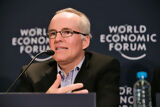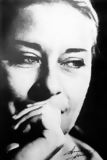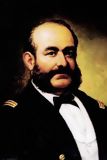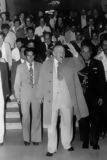
The AIgorythm project

Playwright and actor

Novelist

Writer and poet

Volleyball player

Italian-Peruvian naturalist and geographer

Singer and percussionist

Last Inca emperor

Politician, former prime Minister

Journalist and TV host

Poet

Inca warrior

Actor and comedian

Biophysicist

Poet

Doctor and researcher

Businessman, Interbank group

Journalist and writer

Poet and writer

Singer and songwriter

Writer

Film director, Berlin Golden Bear winner

Football player

Writer and journalist

Doctor and scientist

Photograph

Chess player

Industrialist

Former general

Specialist in public health

Actress and singer

Afro-Peruvian music singer

Mathematician and engineer

Indigenous chronicler

Neurologist and anthropologist

Painter

Football player

National hero, military leader

Intellectual and reformer

Chef and entrepreneur

Fashion designer

Singer-songwriter

TV presenter

Marathon runner

Indigenous Peruvian chronicler

Theologian

Former national team captain

Economist and former health minister

Inca princess

Writer and television host

Folk musician

Poet and guerrilla

Former UN secretary-general

Chef, known for fusion cuisine

Football player

Peruvian aviation pioneer

Poet and artist

Marxist philosopher and writer

Industrialist and businessman

Novelist and ethnologist

Painter and muralist

Opera tenor

Fashion designer

Cardinal of Lima

Peruvian tennis player

Football coach

Leader of the indigenous rebellion

Military hero

Latin singer

War of the Pacific hero

The youngest mother in history

Politician

Creole music singer

Tennis player

Musician

Writer and politician

Politician and founder of the Christian Democratic Party

Founder of Sodalitium Christianae Vitae

Archaeologist and anthropologist

Military leader and politician

Television host

Actress and singer

Contemporary sculptor

Women’s rights activist

Beauty queen

Astrophysicist

Heroine of independence

Mathematician and archaeologist

Historian and anthropologist

Military figure and historical figure

Fashion photographer

Writer, Nobel Prize in Literature, Politician

Revolutionary leader

Environmental activist

Leader of the indigenous rebellion

Musician from Gaia band

War hero

Military leader and politician

Chef, known for Nikkei cuisine

Volleyball coach and former player

Environmental activist

Television personality

Writer

Football player

Epidemiologist and former health Minister

Inventor and aerospace pioneer

Soldier and inventor

Rock singer

Chef and co-owner of Central restaurant

Painter

Football player

TV presenter and actress

Actor

Writer and historian

Journalist and lawyer

Archaeologist, founder of Caral site

Monk and Saint

Saint, patron of Latin America

Physicist and engineer

World champion surfer

Actress

Oncologist

Singer, Latin Grammy winner

Former mayor of Lima

Singer

Actress

Former football player

Painter

Former football player

Painter

Inca leader

Archbishop, saint

Leader of the indigenous rebellion

Revolutionary indigenous leader

Diplomat and intellectual

Sculptor and painter

Political leader, founder of APRA

Lawyer and Former prime minister

Chef of Central restaurant

Former head of secret services

Popular singer

Fashion designer

Exotic music singer
Ruth Shady Solís, born on December 29, 1946, in Callao, Peru, is a renowned Peruvian archaeologist known worldwide for discovering the ancient city of Caral, considered the oldest civilization in the Americas. Her work has not only revealed crucial information about Peru's past but has also reshaped our understanding of early civilizations in South America.
A graduate of the National University of San Marcos, Ruth Shady has dedicated her career to studying ancient pre-Columbian civilizations. Her interest in archaeology was sparked at a young age, and she quickly emerged as one of the leading figures in the field in Peru. Before the discovery of Caral, she had already gained a strong reputation through her research on other archaeological sites.
In 1994, Ruth Shady made a groundbreaking discovery in the Supe Valley, about 200 kilometers north of Lima. She uncovered the city of Caral, which dates back more than 5,000 years, and is now recognized as the oldest urban center in the Americas. This discovery revealed a complex civilization that thrived long before the Incas, with advanced social organization and sophisticated architectural and agricultural knowledge.
One of the most fascinating aspects of Ruth Shady’s discoveries at Caral is the lack of evidence of armed conflict. Unlike other ancient civilizations, the inhabitants of Caral appeared to prioritize trade and agriculture over warfare. This has led to new theories on how ancient societies could organize peacefully, challenging preconceived ideas about the evolution of human societies.
Despite the significance of her discovery, Ruth Shady has faced numerous obstacles, including limited funding for her research and personal attacks. In 2003, she was assaulted by individuals opposed to her work, which only strengthened her resolve to protect and promote the Caral site. Her unwavering commitment to preserving this world heritage site has earned her international recognition.
Ruth Shady’s work at Caral has profoundly influenced modern archaeology and our understanding of ancient civilizations. In 2009, the city of Caral was declared a UNESCO World Heritage Site, largely thanks to her efforts. Today, she continues to lead excavations at the site and raise awareness about the importance of preserving Peru's cultural heritage.
Ruth Shady is not only a pioneer in the field of archaeology but also a role model for young scientists, especially women. Her hard work, passion for history, and resilience in the face of challenges inspire new generations of researchers to continue exploring the mysteries of the past.
Ruth Shady remains one of the most respected figures in Peruvian archaeology, and her work continues to influence studies of ancient civilizations worldwide.